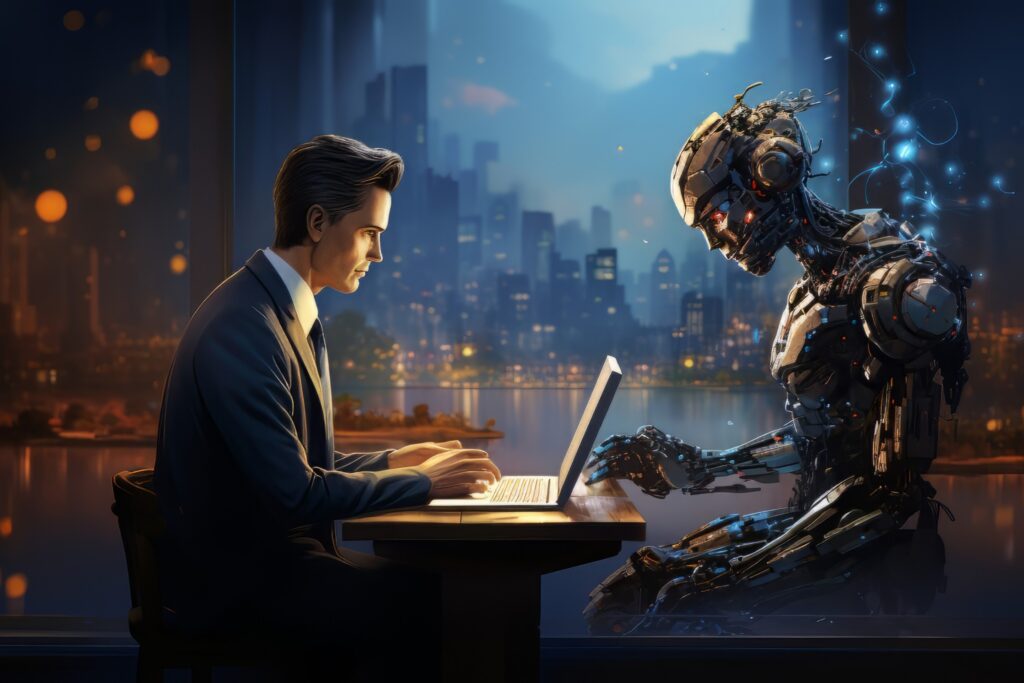The Emergence of AI Agents: How They’re Transforming the Future

The Emergence of AI Agents: How They’re Transforming the Future
Introduction: What Are AI Agents?
AI agents are among the most groundbreaking technologies of our era. From customer service robots to autonomous vehicles, AI agents are becoming a part of many industries, shaping the way we work, communicate, and live. But what are AI agents, and how do they function?
Simply put, an AI agent refers to a computer system that has the capability of executing tasks or making decisions autonomously without constant human input. Unlike ordinary software, AI agents have an extent of intelligence through which they adapt to new scenarios, learn through experience, and act in ways that match intended objectives.
The development of AI agents traces its origin to the artificial intelligence field, which seeks to mimic human-like mental processes in machines. Through a number of technologies like machine learning, natural language processing (NLP), and computer vision, AI agents are increasingly sophisticated, with uses in nearly every industry.
In this article, we will learn what AI agents are, how they work, and why they are so revolutionary. We’ll also examine their development, issues, and the future of AI agents in an increasingly changing world.

Outline for the Entire Blog:
Introduction to AI Agents
Definition of AI agents
Summary of how AI agents work (autonomy, learning, decision-making)
Key features: perception, action, and learning
Examples of AI agents in everyday life (chatbots, recommender systems, self-driving cars)
History of AI Agents
Early AI systems: Rule-based systems and expert systems
The shift from rule-based to machine learning-based agents
Most significant advances in AI: Neural networks, reinforcement learning, etc.
The impact of data and big data on developing AI agents
Types of AI Agents
Reactive Agents: Basic, rule-based agents
Cognitive Agents: With learning and decision-making
Autonomous Agents: Completely independent, self-learning agents
Social Agents: AI agents that communicate with humans and other agents
Hybrid Agents: Merging different approaches for greater capabilities
How AI Agents Learn and Improve Over Time
Supervised Learning: Training agents with labeled data
Unsupervised Learning: Learning from unlabeled data
Reinforcement Learning: How agents learn through trial and error
Transfer Learning: Using learned knowledge in new situations
Real-world applications of AI agents employing these methods
Applications of AI Agents Across Various Industries
Healthcare: Diagnostic aides, robotic surgery, patient care
Business: Chatbots, recommendation systems, process automation
Entertainment: AI-controlled game characters, movie suggestions
Automotive: Self-driving cars and navigation
Finance: Detection of fraud, algorithmic trading, customer support
Obstacles and Ethical Issues
Bias in AI Agents: How bias enters machine learning models and the implications
Accountability: Who is accountable for the actions of an AI agent?
Transparency: The black-box problem of AI systems
Privacy Issues: Data protection and user permission in AI-powered applications
The Future of AI Agents
Human-AI Collaboration: AI agents as workplace assistants
AI in Daily Life: Smart homes, personal assistants, and more
Autonomy and Ethics: Balancing autonomy and human control
Advancements to Watch: Combination of AI with IoT, quantum computing, and 5G
Projections for the next decade of AI agent development
Sample of First Section
What Are AI Agents?
AI agents, in the most basic sense, are programs that operate independently to accomplish a task or solve an issue. The most important feature that distinguishes AI agents from regular software programs is that they can make decisions independently based on the input they get from the environment.
Deep at their core, AI agents are made to perceive and sense the world around them (via sensors, data, or interfaces), process what they’ve sensed, and then act accordingly. This makes them inherently more dynamic and flexible than traditional systems that are bound by a predetermined set of rules or instructions.
In order to learn how AI agents operate, it’s crucial to deconstruct their major components:
Perception: This is the way an AI agent acquires knowledge about its surroundings. For example, a driverless vehicle perceives the world around it using cameras, LIDAR, and other sensors to observe road conditions, obstacles, and other cars.
Decision-Making: Once it has perceived the environment, the AI agent must decide what action to take. This decision is usually made using algorithms, machine learning models, or heuristics that determine the agent’s behavior.
Action: After a decision has been made, the AI agent acts. This might be as straightforward as sending back a reply to a user question (such as a chatbot) or as sophisticated as managing the steering and brakes of a vehicle in real-time.
One of the main attributes of AI agents is that they get better over time. They learn from their experiences (a process called machine learning) and become more capable of making good decisions. This learning process can occur in different ways like supervised learning, unsupervised learning, or reinforcement learning.

